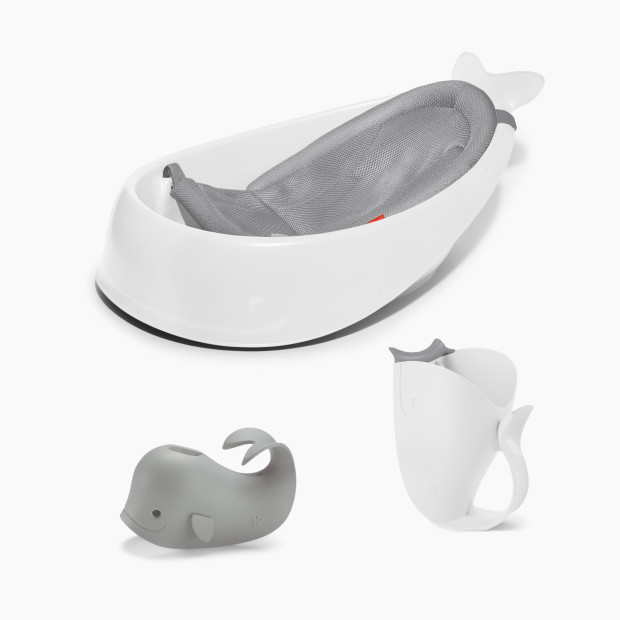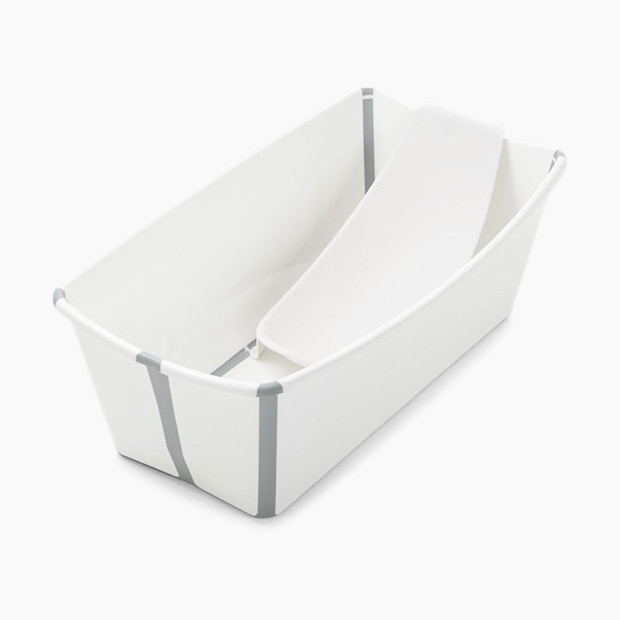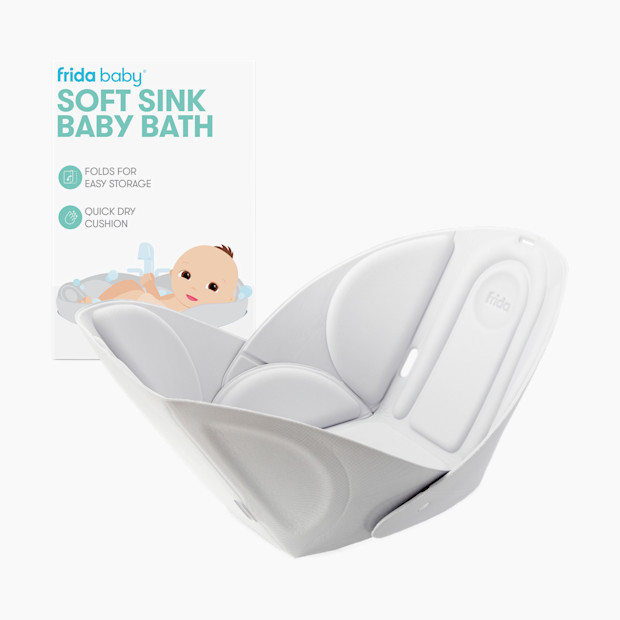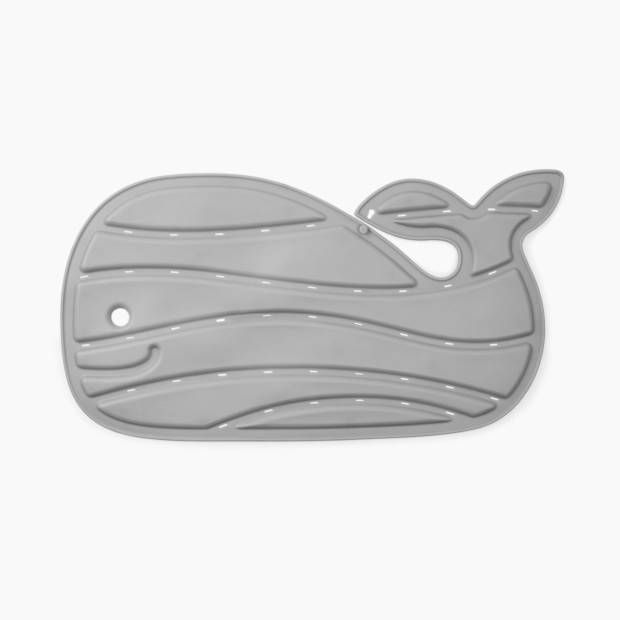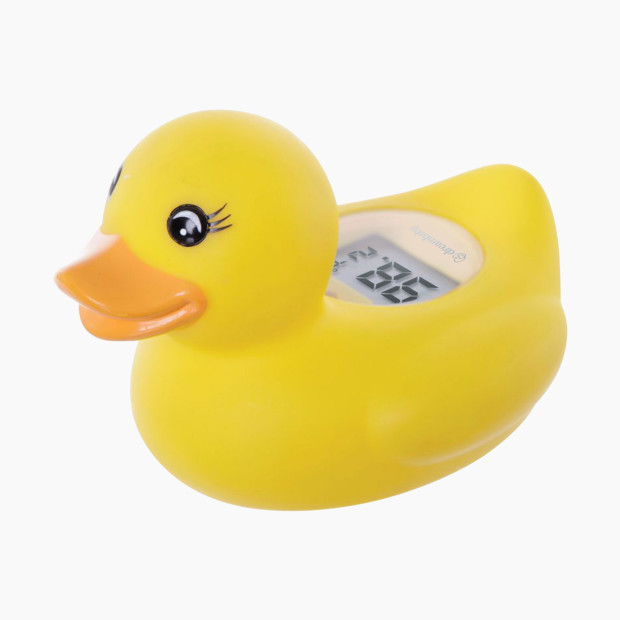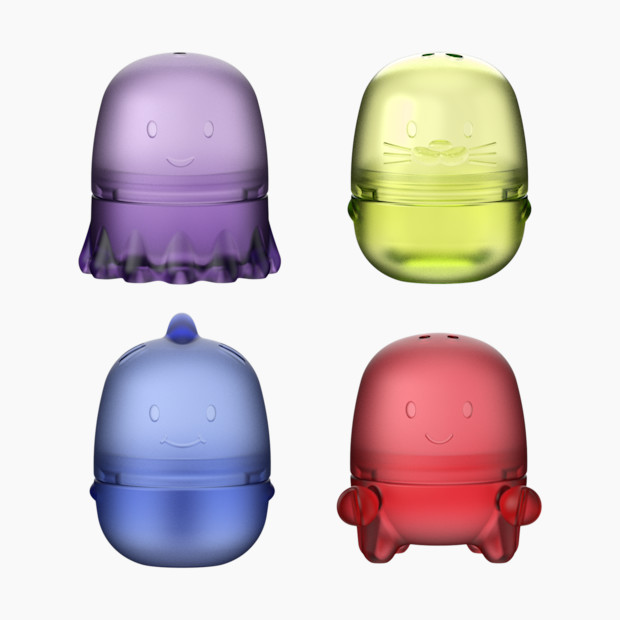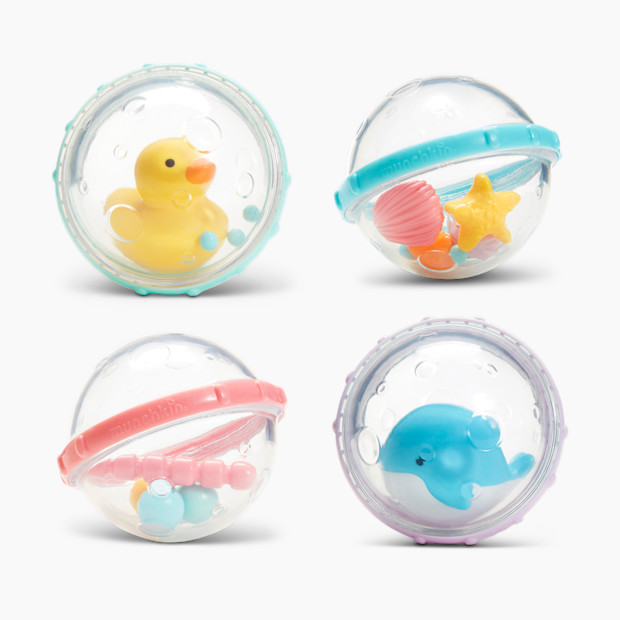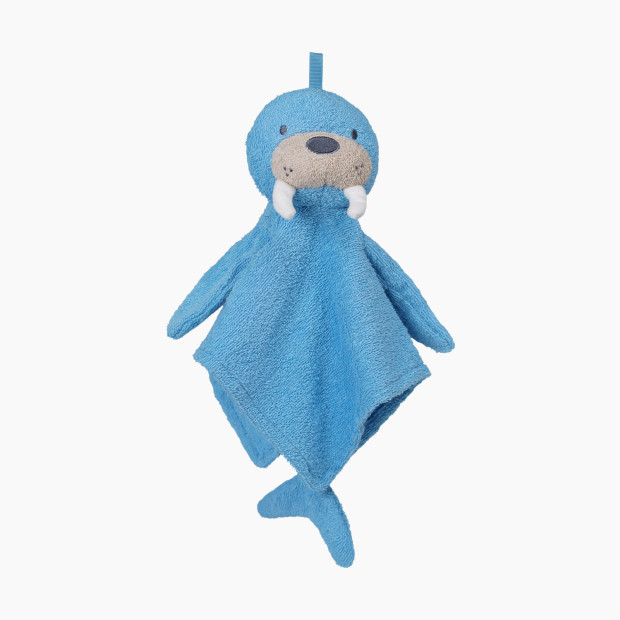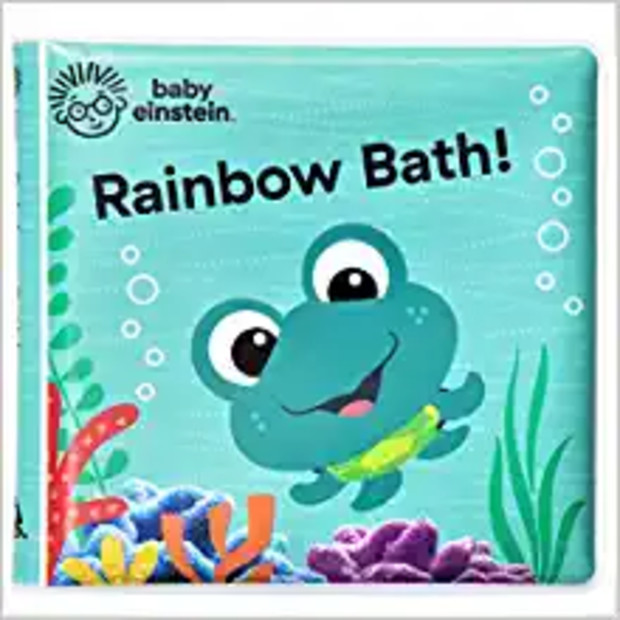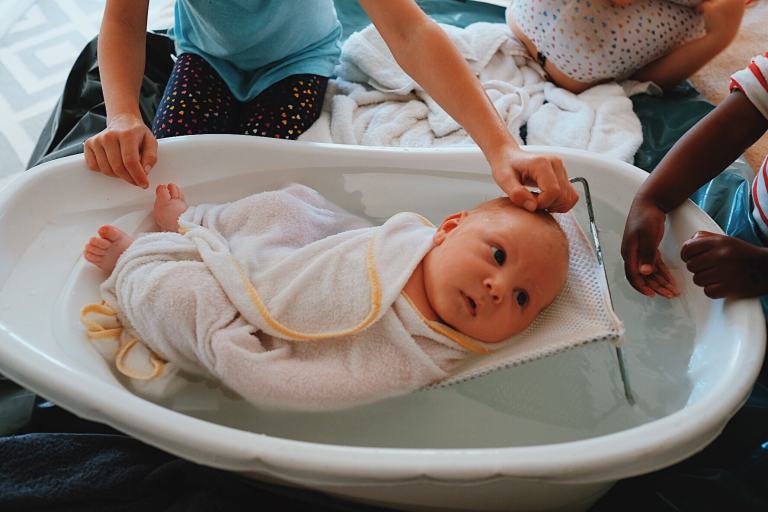
How to Keep Baby Safe During Bathtime
From temperature to toys, here’s how to make sure your baby’s bath routine is both fun and safe.

In This Article
Bath time can be a fun and exciting part of your day with baby, or it can be a soothing step in baby’s bedtime routine. But it also requires careful attention to safety, since things like water level, temperature and even the type of bathtub can pose risks. To help you keep baby’s bathtime safe and enjoyable, we got expert advice from Dr. Chris Klunk, a board-certified neonatologist at Pediatrix Medical Group. There’s even a quick-reference safety checklist at the end (because you have enough to think about already).
Choose the Right Bathtub
While you might wonder if you can bathe your baby directly in the kitchen sink or regular bathtub, specially designed infant bathtubs and sink inserts are often the safest choice. "It can be hard to keep an infant properly positioned in an adult bathtub," Dr. Klunk says, "and devices [like infant bath seats] designed to hold them upright or position them in full-size tubs run the risk of tipping over." A baby bathtub can be used either on its own or inside a regular tub. If you bathe your baby in the sink (with an insert), just make sure you position the faucet well out of the way to prevent injury.
Also important is understanding what type of baby tub is right for your baby’s age and developmental stage. Newborns need tubs with a sling since they have poor head control and are unable to sit up on their own. Once your baby is around three months old and can keep their head up for long periods of time, they can use a reclining tub. And when they can finally sit up totally unassisted, then just about any style of infant tub will do. Here are a few of our favorite infant bathtubs that work for all stages:
As for sink inserts, they’ll work for newborns and smaller babies, but they won’t work forever. So keep in mind that you may need to switch over to an infant tub eventually.
Prevent Slips and Falls
Even with the tub inside a tub, it’s still important to create a non-slip barrier between the two. “Tub bottoms are slick and a fall is dangerous both from the impact (especially to the head) and drowning risk," Dr. Klunk says. You can choose between suction mats or non-slip strips—either option works as long as it provides good traction and actually stays put on the tub bottom.
Just remember to keep your non-slip mats clean. Since they’re constantly submerged in soapy water, they tend to get residue buildup and mildew. Rinse the mat off after every bath (after you’ve drained the tub), and give it a quick scrub down with a washcloth or cleaning brush when you notice buildup.
Check the Water Temperature
Getting the water temperature just right is crucial since babies can't regulate their body temperature as well as adults can.
"The goal here is water that is warm to the touch," Dr. Klunk says. "Babies don't have the best ability to maintain their temperature and tend to get cold and hot easily." His recommendation: Aim for water that's close to body temperature—around 98 degrees Fahrenheit. Testing the water temperature with the inside of your wrist is an age-old method, but placing a bath thermometer in the tub as you’re filling it can help you keep a more accurate eye on the temperature.
To prevent accidental burns, the American Academy of Pediatrics (AAP) also recommends setting your home's water heater no higher than 120 degrees Fahrenheit.
Watch the Water Level
When it comes to water depth, less is definitely more. "It doesn't take much to clean a baby," Dr. Klunk says. "Pediatricians don't recommend submerged baths of any depth until the umbilical cord dries up and falls off, and after that only an inch or two of water is really needed for a good, clean, safe bath."
This advice goes for infant bathtubs, sink baths and even once your little one graduates to the big tub—even toddlers don’t need more than a couple inches of water to get clean. And don’t worry, they’ll be able to have fun and splash around just fine in that amount of water (and somehow still manage to splash water on you too).
The most important rule, Dr. Klunk emphasizes, is to never leave your baby unattended in the bath. "[Not] even a moment," he says. "Drowning can happen in inches."
Another thing to keep in mind is that, like Dr. Klunk mentioned above, your baby has a hard time maintaining their body temperature. And with only one to two inches of warm water in the tub, most of their body is exposed to the cool air. To help baby stay warm, the AAP recommends wrapping baby in a towel inside the tub (also known as a swaddle bath) and/or frequently pouring warm water over them. Don’t put your baby under a running faucet, since water temperature can fluctuate.
Watch Out for the Faucet
Your tub or sink faucet might not seem like a major hazard, but Dr. Klunk says it deserves attention. "Tub faucets are potential sources of injury both because they are often hard and metallic, causing injury if bumped into or fallen on, and because they may be hot to touch or producing hot water," he says.
His advice, along with the AAP’s, is to keep the faucet well away from baby. That might look like using an infant bathtub outside of the big tub (which might result in a little water splashed on your bathroom floor). Or, if you’re bathing baby in the kitchen sink, you can push the faucet all the way to the other side.
If neither of those are an option for you, then you’ll need to cover the faucet. Here are a few options that can help protect against accidental bumps:
Keep Bath Toys Clean
While bath toys can definitely make things more fun, Dr. Klunk recommends saving them for when your baby is a little older, since babies under six months old aren’t likely to play with bath toys just yet (the water itself provides plenty of entertainment).
Once your baby is ready for bath toys, the main thing to keep in mind is how easily the toys can be cleaned. Squirting bath toys that can’t be disassembled and drained are especially prone to mold, and Dr. Klunk says they may be worth avoiding. Stick with self-draining toys, bath toys that separate and books that are easy to wash and dry completely.
Bathtime Safety Checklist
Before every bath:
Test the water temperature (around 98 degrees F)
Gather all baby’s supplies within arm's reach
Check that the non-slip mat is secure
Remove any razors or other hazards from reach
Ensure the faucet is out of the way or that a cover is in place
During the bath:
Never leave baby unattended
Keep the water level low (no more than two inches)
Don’t leave the faucet running
Keep baby warm with a washcloth, swaddle bath or frequent rinsing
For newborns: support baby's head and neck and keep at least one hand on them
